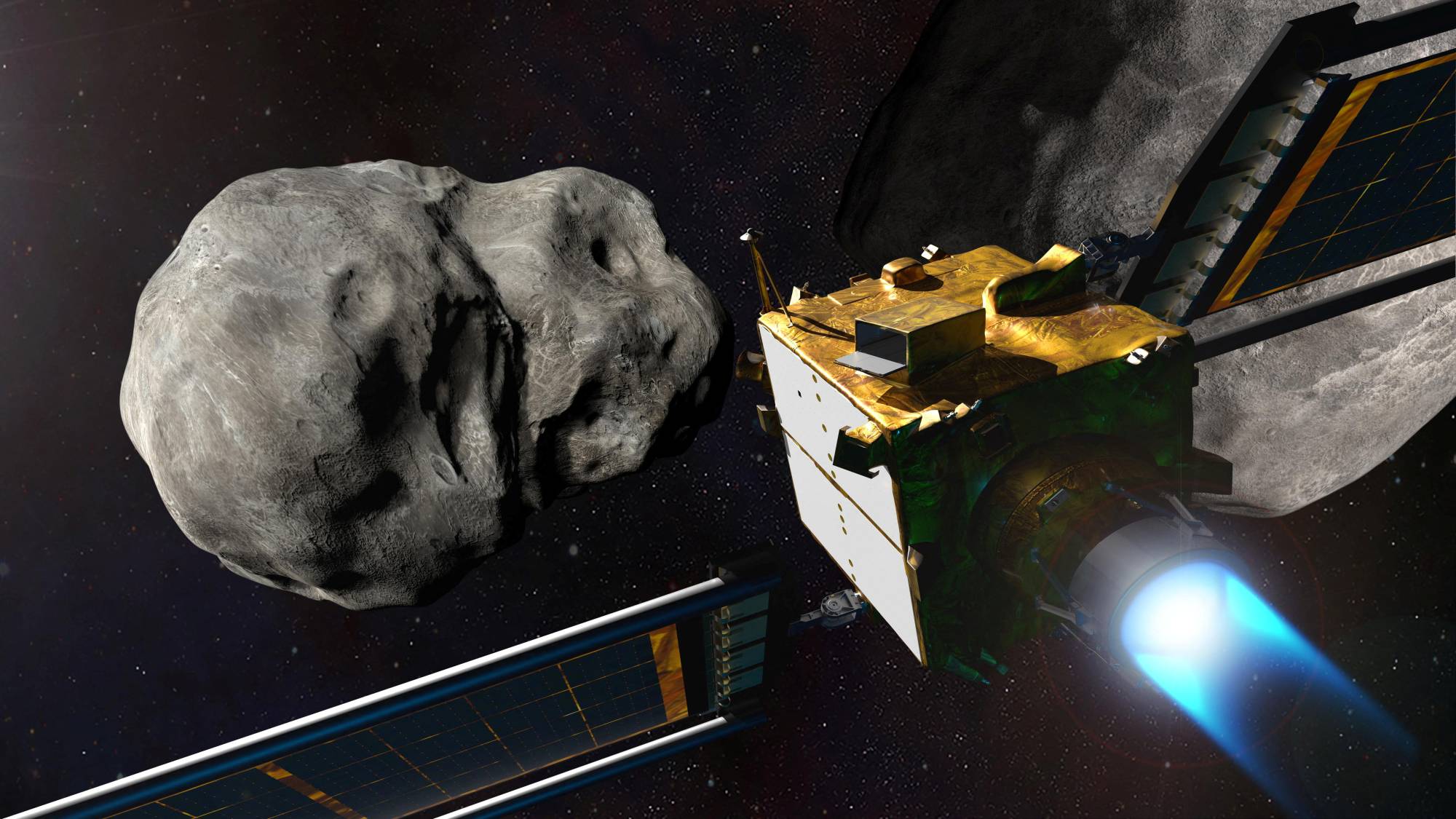The world’s first planetary defense technology demonstration, NASA’s Double Asteroid Redirection Test (DART), successfully struck its asteroid target on Monday after spending 10 months in space. This was the agency’s first effort to move an asteroid in orbit.
At 7:14 p.m. EDT, the successful impact was announced by mission control at the Johns Hopkins Applied Physics Laboratory (APL) in Laurel, Maryland.
A small, Italian-made satellite that was created to observe the aftermath of the cosmic collision filmed the spectacular moment when a NASA spacecraft purposefully drove head-on into an asteroid. The Italian Space Agency, L’Agenzia Spaziale Italiana, published images of NASA’s DART mission colliding with the innocuous and minor asteroid Dimorphos on Tuesday.
Images captured before and soon after the collision show Dimorphos and the bigger, brighter asteroid it orbits. A planetary defense tactic that includes “nudging” an asteroid to permanently change its course was tested for the first time in history during the deliberate impact that took place on Monday. With a distance of 6.8 million miles from Earth, Dimorphos is not a danger to the planet.
As the DART spacecraft got closer to its asteroid target, the LICIACube CubeSat from the Italian Space Agency was launched. The DART probe crashed into the surface of the space rock, sending a cloud of expelled debris, which was spectacularly recorded by the small companion satellite.
The engineering company located in Turin that created LICIACube, Argotec, tweeted on Tuesday: “The #NASA #DartMission concluded here, precisely. a breathtaking feeling and the start of fresh discoveries.”
After the celestial show, LICIACube flew 35 miles close to Dimorphos and took pictures of the results. According to the Italian Space Agency, the first pictures were sent back to Earth at 4:23 a.m. local time in Italy.
The DART mission was successful, according to NASA on Monday, although it might take a few weeks to check for changes in the asteroid’s track. The objective was to shorten Dimorphos’ almost 12-hour orbit around Didymos by a few minutes.
As the DART mission neared Dimorphos, it sent live photos of the asteroid’s boulder-strewn surface; it will take time to analyze the data from LICIACube and the spacecraft’s own onboard camera. The LICIACube team tweeted on Tuesday, “Now weeks and months of hard labor are now beginning for scientists and technicians participating with this project, so hang tight because we will have a lot to say!”
The DART probe launched the small CubeSat on September 11. Test images of Earth and the Pleiades star cluster were taken by LICIACube (short for Light Italian Cubesat for Imaging Asteroids) in the weeks before the big event.
The CubeSat is equipped with two cameras: LUKE, a camera with a larger field of vision, and LEIA, a black-and-white
camera that will take high-resolution pictures. The Double Asteroid Redirection Test, or DART, the mission was created to evaluate humankind’s capacity to save Earth from a possibly disastrous collision with a space asteroid.
Source: NBC

